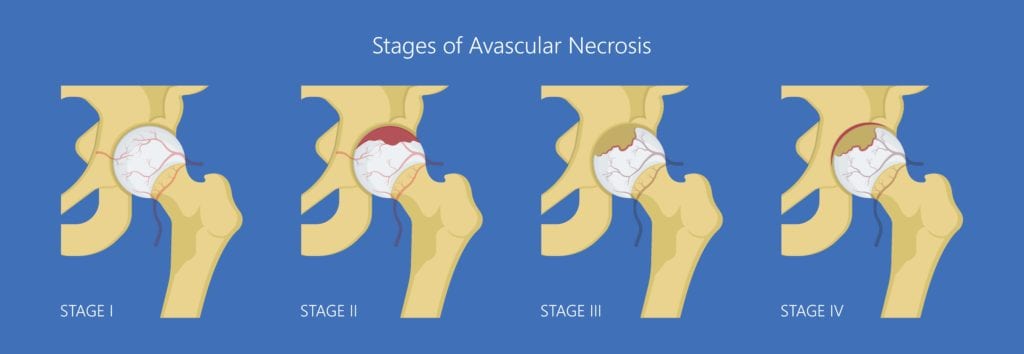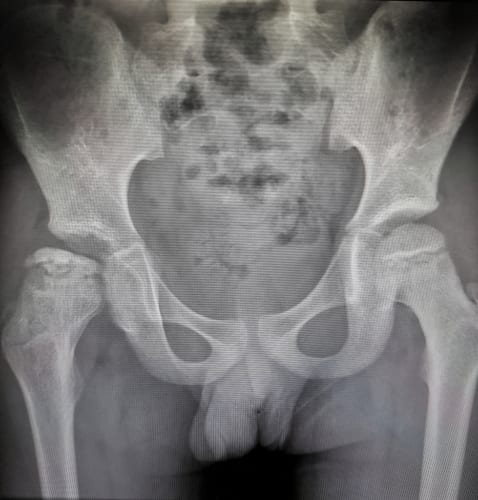What is Avascular Necrosis of the Hip (or AVN)?
Avascular Necrosis, or AVN, of the hips is death of the humeral head caused by loss of vascular supply to the hip
joints, basically where the femoral head sits in the socket. Unlike other forms of arthritis, AVN is unusual
in that it affects a younger population of people ranging in age from 35 to 50 years old. The typical age of
discovery is 36 years old, is commonly found in both hips and more commonly affects men than women.

What Happens in AVN?
AVN occurs when there is coagulation in the microcirculation of the bone that forms a clot in the veins.
The venous clot causes a backup of the arterial blood trying to circulate oxygenated blood to the bone;
this eventually leads to cell death and then bone death due to the lack of circulation. The bone death
causes small breaks and collapses in the bone leading to collapse of the femoral head and loss of surface
cartilage.
What are the Symptoms?
People with the condition commonly don’t have any symptoms or pain during the early stages of the
disease. As the condition progresses and the femoral head begins to collapse, the typical complaint is
groin and thigh pain more commonly than buttocks pain. Pain is usually increased with activities
including weight bearing, going from sit to stand, and walking up an incline. In later stages people
present with limited range of motion of the hips and pain at night with rest.
What Causes AVN?
AVN can be caused by trauma to the hip, but in the majority of patients the specific cause is unknown. It
is believed that having one or more risk factors combined with genetic predisposition contribute to the
development of AVN. Risk factors commonly include past use of steroids, bleeding or coagulation
disorders, trauma, radiation therapy, alcoholism, rheumatoid arthritis, viral illness and bacterial
endocarditis to name a few.
How Is This Diagnosed?
Xray of the hip is usually the first diagnostic study performed and may show some joint space narrowing
early on that can be seen in osteoarthritis but is not sensitive or specific. AVN may be detected on
regular x-rays in later stages with collapse of the femoral head. MRI of the hip is the most sensitive
accurate study and can diagnose areas of femoral head AVN early on in the disease process.

How is AVN Treated?
Treatment options for Avascular Necrosis of the Femoral Head depend on the severity of the disease
including the size of the necrosis and degree of collapse of the femoral head. In early mild to moderate
disease without femoral head collapse there have been several case studies using core decompression
and stem cell implantation showing improvement in pain and function as well as arresting progression of
the disease in many cases. . Stem Cell Therapy in Osteonecrosis Femoral head
More severe Avascular Necrosis with femoral head collapse generally requires more advanced treatment with hip
replacement surgery. Stem cell treatment for AVN

Michelle Hall
PA-CPhysician Assistant




